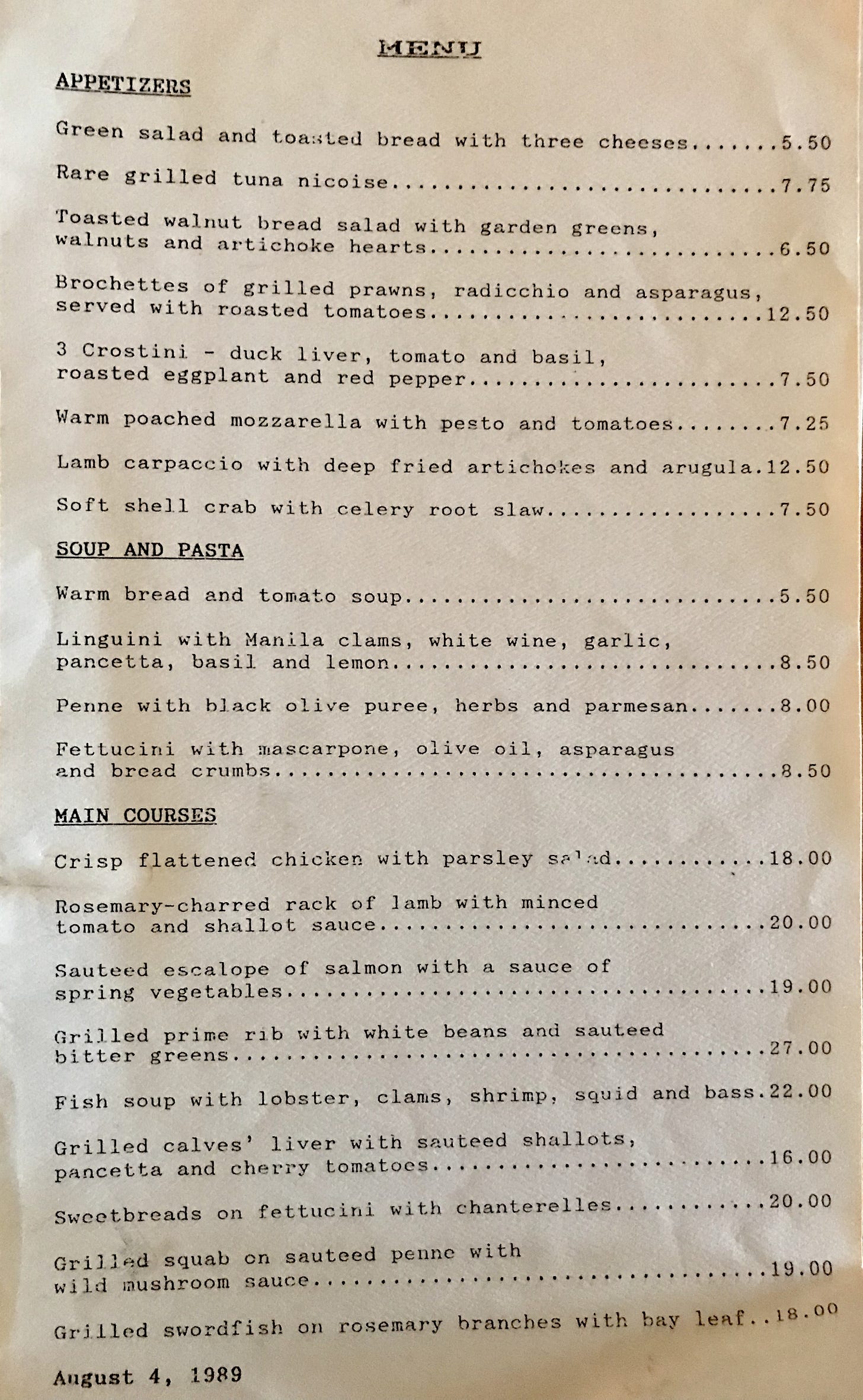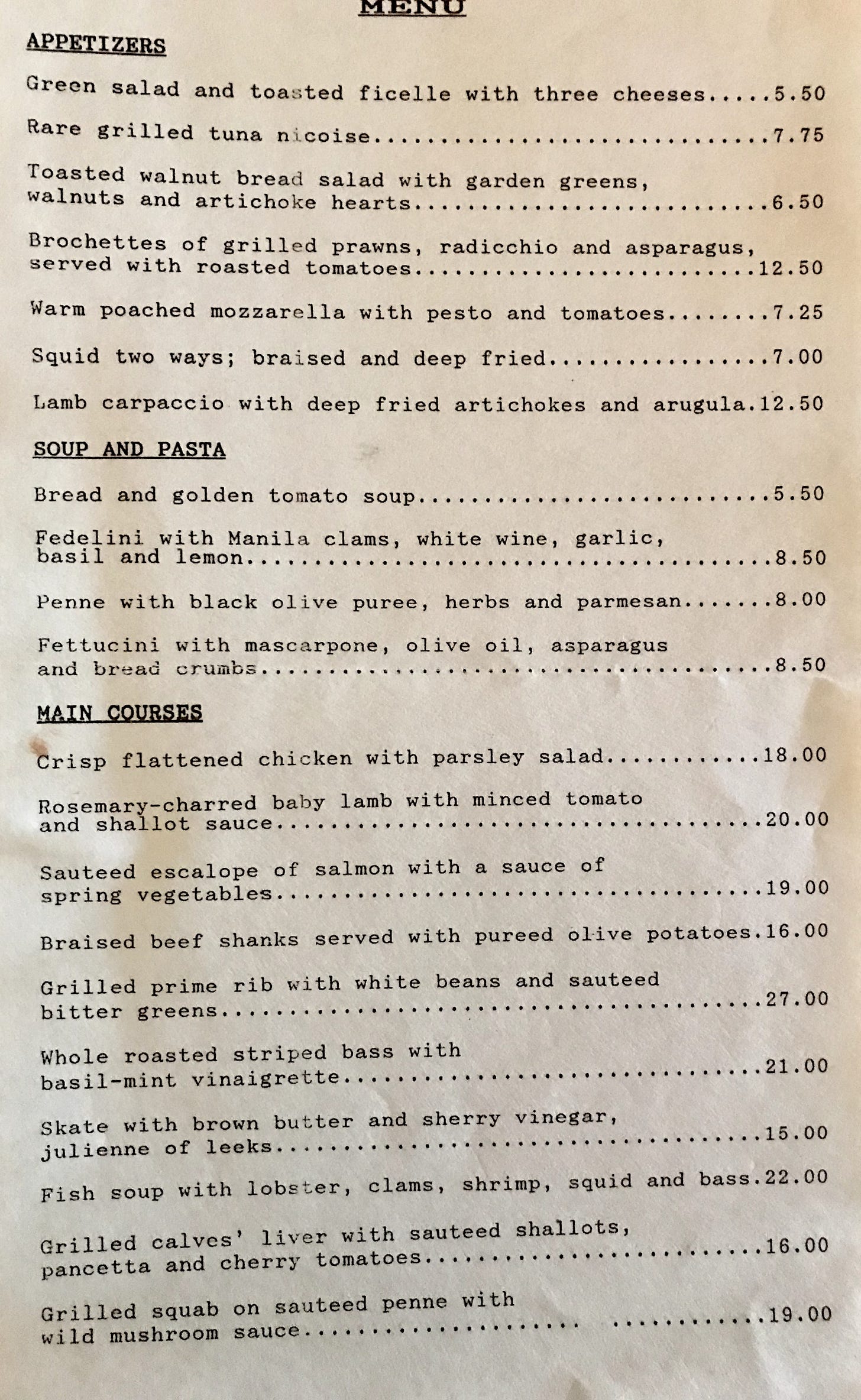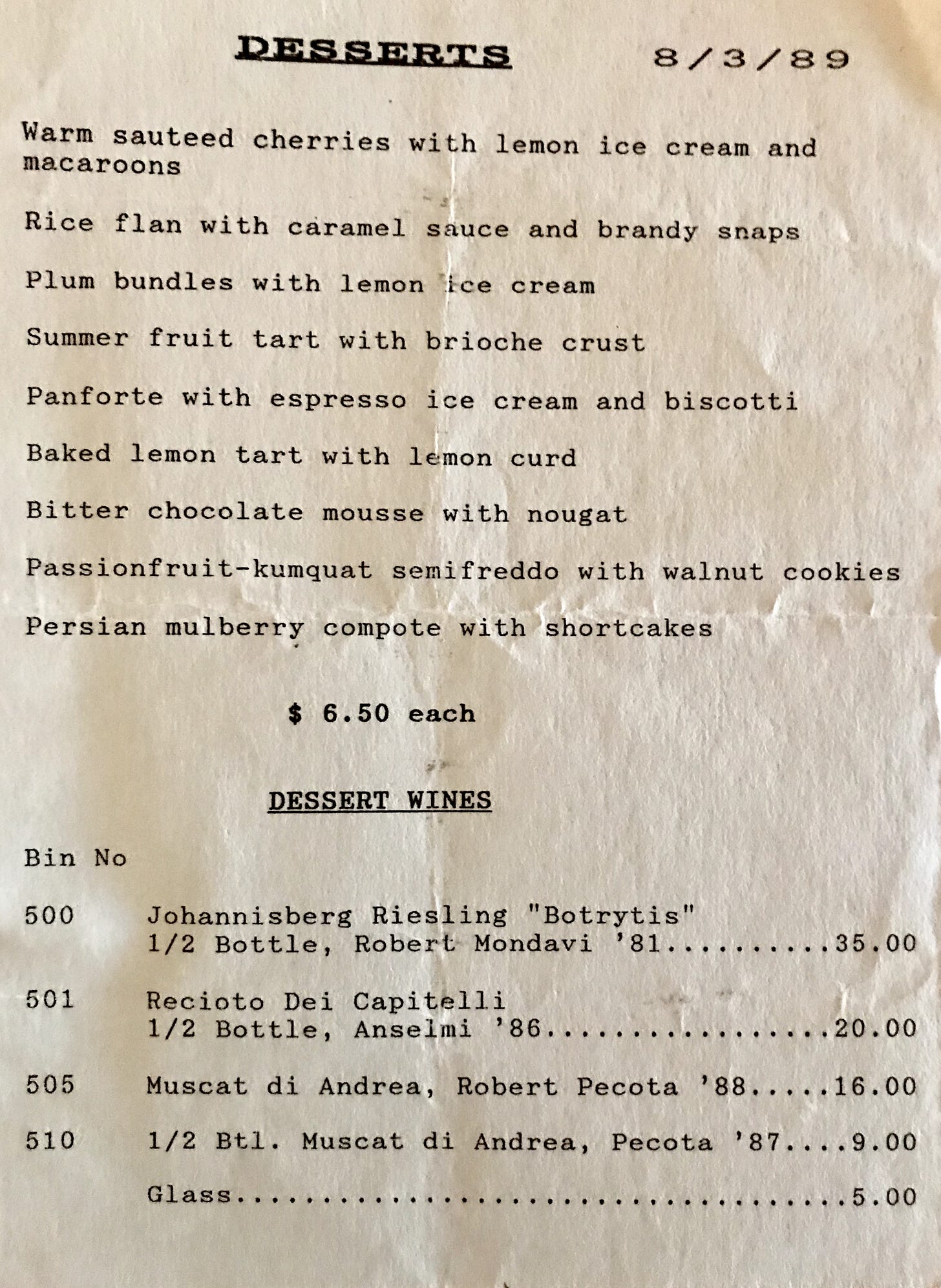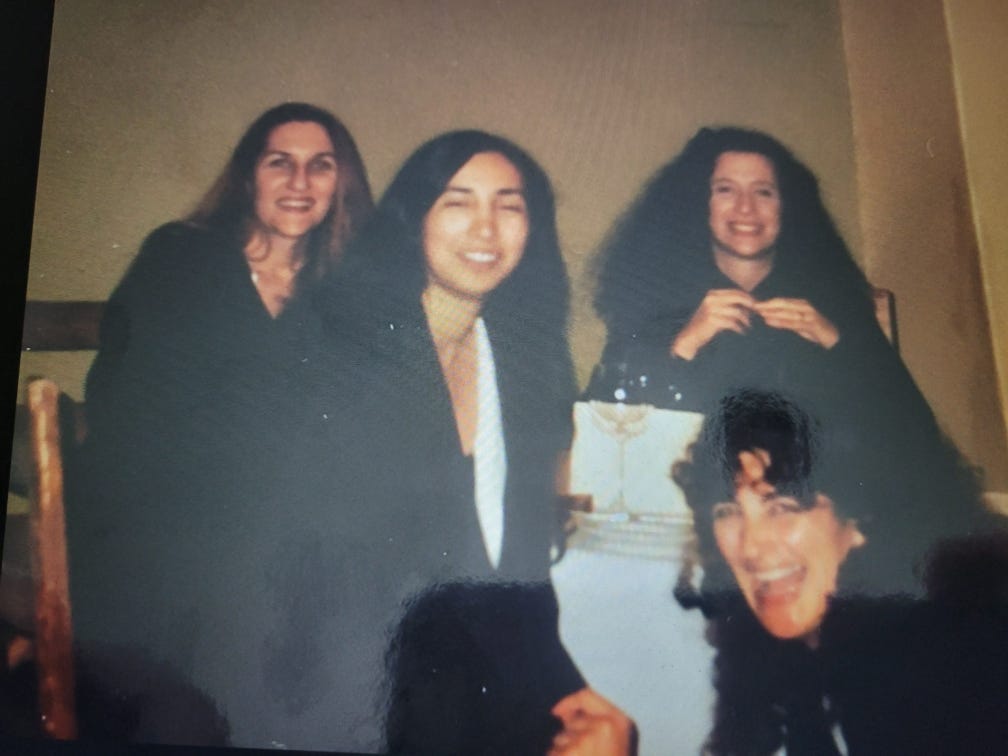Fresh or frozen?
Our debut episode of “Three Ingredients” starts with the revelation that Nancy has fallen for frozen artichoke hearts from Spain packed individually in trays “that kind of look like an egg carton.”
“The opposite of seasonal, local,” Ruth says.
“Alice Waters would be shaking her head,” Nancy admits.
But she argues that even in a seasonal California kitchen, there can be a place for canned, jarred or frozen foods, especially if they come from small producers around the world. In fact, she wrote “A Twist of the Wrist,” all about using “quality premade ingredients” to make dishes, as she writes in the cookbook’s introduction, “that have the same complexity of flavors and textures as ones you’d be served in a restaurant.”
Since it’s likely many of you may not have a copy of “A Twist of the Wrist” — published ahead of its time in 2007 before the current tinned fish craze, it’s the one book of Nancy’s that didn’t sell — you’ll find a quick Tuscan bean soup recipe from “A Twist of the Wrist” below, along with a couple of other recipes for subscribers to this podcast. By the way, one book of Nancy’s that is selling — indeed, it’s already a best-seller — is her just-published “The Cookie That Changed My Life: And More Than 100 Other Classic Cakes, Cookies, Muffins, and Pies That Will Change Yours.” You’ll hear about that in future episodes.
The fish missionary
Ruth talks in this episode about the time she and Laurie learned to pick out the best fish at supermarkets from the late Jon Rowley — Julia Child called him “the fish missionary.” The outing was for a 1993 article written when Ruth was restaurant critic and food editor of the L.A. Times. Here’s a link to that article and an excerpt with tips on fish buying from Rowley that still holds true today:
For whole fish: “The eye myth: A clear eye does not necessarily indicate freshness. Flesh should be firm and elastic to the touch. Skin should reflect the light.”
For swordfish: “Flesh [should be] luminous and reflective. Trust yourself: you can tell which one is good. Circulatory markings should be bright red; brown is a sign of age.”
For halibut: “Fish [should be] clear, luminous and white. Red marks are bruises, which will not taste clean.”
For shrimp: If the shrimp is dead, it’s better without its head. Shrimp have an enzyme sac in their head, and as soon as the shrimp dies, the enzyme goes through the meat and makes it mushy.
For crabs: “Just being alive doesn’t mean much. Once you put them in a tank, they start losing their fat. With a crab, you can’t tell what’s inside until you get into it. So you have to ask how often the crabs come into the store, and then you just have to buy one and see.”
On ice: Ice doesn’t refrigerate upward. If the ice is not on top the fish is exposed to the air. Unless it moves really fast, it’s better in a refrigerated case.
Trashcan stuffing
“Is that the worst job you’ve ever had?” Ruth asks Nancy, who describes what it was like when she and the late Mark Peel left Spago in L.A. to become the chefs at Maxwell’s Plum in New York, part of what Ruth at the time called “the Spagoization of Manhattan” in the L.A. Times.
The restaurant was huge, which meant that every Thanksgiving Maxwell’s Plum would serve 1,500 to 2,000 guests. That’s a lot of turkey and stuffing.
How do you make stuffing for 1,500? You use trashcans as mixing bowls.
“I remember looking up at Mark and saying, this is the first and only Thanksgiving I will ever serve at Maxwell's Plum,” Nancy tells us. And it was.
She and Mark lasted less than a year in the job.
“We put our stuff in storage,” Nancy says, “rented a house in Tuscany for a month … and [planned] our future, which was, ‘Let's open our own restaurant and let's not serve Thanksgiving dinners to 2000 people.”
The result was their groundbreaking Los Angeles restaurant Campanile. It defined what Jonathan Gold called “the urban rustic aesthetic,” which for a time he said was “the lingua franca of California restaurants.” Ruth sent Laurie to report on the months-long opening process of Campanile (you can read the story here), which is how she got to know Nancy so well.
In this episode, Nancy talks about the flattened chicken that became one of the so-called signature dishes at Campanile. We thought you might like to see the 1989 opening menu.
Panna cotta cook-off
A dish that wasn’t on Campanile’s opening menu but became one of the restaurant’s most popular desserts is panna cotta. In fact, Nancy is likely the chef who popularized panna cotta in the U.S. during the 1990s after she had it in Italy. Laurie was with Nancy in Italy when she ate many dishes of panna cotta, including a particularly clumsy one that revealed the key ingredient that led to Nancy’s great version. Find a recipe from Nancy below.
But wait, Ruth has her own version of panna cotta — one that’s missing the key ingredient that Nancy uses to make her dessert set. Because, in truth, Ruth’s panna cotta is a posset (cooked cream set with lemon juice). Which one do you like best?
Nancy’s Vanilla Panna Cotta with Mixed Berry Compote
For the panna cotta:
2 tablespoons cold water
1 envelope unflavored gelatin (about 2 1/2 teaspoons)
3 cups whipping cream
7 tablespoons sugar
1 vanilla bean, halved lengthwise and pulp scraped out
For the berry compote:
1/4 cup water
1/2 cup sugar
1 vanilla bean, halved lengthwise and pulp scraped out
3 cups fresh mixed berries (raspberries, blueberries, blackberries)
1/2 cup brandy
2 tablespoons cornstarch
To make the panna cotta: Place water in a small bowl and sprinkle with the gelatin. Leave the gelatin to soften for 5 minutes.
Meanwhile, in a saucepan over medium-high heat, warm the cream with sugar and vanilla and pulp, stirring until sugar is dissolved. Turn off heat and add softened gelatin. Stir until it dissolves. Strain mixture through a fine-mesh strainer into a measuring cup with a spout; then pour it into 4 (8-ounce) ramekins. Chill until firm, about 3 hours.
To make the compote: In a large heavy-duty pan or skillet, stir together the water and sugar; add the scrapings and the vanilla pod. Over medium-high heat, bring the mixture to a boil without stirring. Using a pastry brush dipped in water, brush down the sides of the pan and remove any undissolved sugar granules. When the sugar begins to color, after about 3 or 4 minutes, tilt and swirl the pan to cook evenly. When the sugar reaches an even medium caramel color, remove from heat.
Add the fruit, tossing in the pan to coat. Be careful, as mixture might spatter and the caramel might seize and harden. Add brandy and return pan to low heat, carefully cooking the fruit until the sugar melts, about 1 minute.
Place a large strainer over a bowl and pour in fruit compote, straining the liquid into the bowl. Remove vanilla pod and transfer the fruit to a serving dish. Reserve the liquid.
Whisk cornstarch into the reserved liquid. Return the liquid to the skillet and, over medium heat, bring to a boil, whisking constantly. Remove from heat and pour thickened juice over the cooked berries. Set aside to cool.
To serve, dip panna cotta in hot water to loosen sides or run a small knife around the edges to loosen. Unmold on serving plates and spoon the compote over the top. Serve immediately. You will have compote left over.
Makes 4 servings.
Ruth’s Gelatin-Free Panna Cotta
3 lemons
2 pints whipping cream
1 cup white sugar
Grate the zest from the lemon, being careful not to include any of the bitter white pith. Squeeze the juice from the lemons into a bowl, add the zest and set aside.
Pour the cream into a heavy-bottomed pot, stir in the sugar and bring to a boil, stirring constantly and scraping the spoon across the bottom of the pot for 2 minutes.
Remove from the heat and, still stirring, add the lemon juice and zest. Pour into 6 small ramekins and set in the refrigerator for at least 4 hours (although overnight would be better).
Makes 6 servings.
Let’s Talk!
When Nancy found prepared artichoke hearts from Spain at the Fancy Food Show it changed her life. And when she shared that with the two of us it changed ours.
Have you made any recent food discoveries that rocked your world?
Nancy’s ‘Twist of the Wrist’ Bean Soup
Here is the bean soup recipe we promised earlier from Nancy’s “A Twist of the Wrist.” It’s free to listen to our podcast, but to thank you for becoming a paid subscriber to Three Ingredients, we’ll give you at least one recipe or restaurant recommendation plus show notes and other insider material with every episode
Tuscan Bean Soup with Prosciutto and Grated Parmigiano-Reggiano
This is a 25-minute take on pasta e fagiole, the classic Tuscan bean and pasta soup, but without the pasta. Where the homemade version is thickened as a result of the beans being cooked for hours, I created a rich, creamy base by pureeing some of the beans. I felt the soup needed a fresh vegetable, so I used Napa cabbage because it cooks very quickly and adds a slightly sweet flavor. Finally, I added fresh herbs and then topped the soup with prosciutto, olive oil, and Parmigiano-Reggiano.
4 servings
4 (15-ounce) cans creamy beans (such as giant white beans. borlotti beans, or cannellini beans), not drained (about 6 cups)
6 large garlic cloves, grated or minced (about 2 tablespoons)
3 teaspoons kosher salt
2 teaspoons fresh thyme leaves
4 large fresh basil leaves
2 cups shredded Napa cabbage (about /4 head)
High-quality extra-virgin olive oil, for drizzling
Parmigiano-Reggiano wedge, for grating
4 thin slices prosciutto (about 2 ounces)
Combine the beans and their liquid with the garlic, salt, thyme, basil, and 2 cups of water in a large saucepan and bring to a boil over high heat. Reduce the heat to low and simmer for 5 minutes to meld the flavors. Remove about 1 ½ cups of the beans, returning any garlic or basil to the saucepan. Use an immersion blender to purée the remaining beans in the pot until smooth. (Alternatively, let the soup cool slightly then transfer it to a blender or food processor and purée, holding the lid down tight so the hot liquid doesn't splatter out.) Stir in the reserved beans and cabbage and thin the soup with water if necessary. Cook the soup over medium heat until the cabbage wilts and is slightly tender, about 5 minutes.
Divide the soup evenly among four large soup plates or bowls, filling them to just below the rim. Drizzle each serving with high-quality olive oil and grate a thin layer of Parmesan cheese over them. Tear one slice of the prosciutto into a few pieces and rumple the pieces onto one bowl of soup; repeat with the remaining prosciutto slices.
Want to see what we looked like back then? Here’s a photograph taken at Ruth’s house in Los Feliz in 1989. Nancy’s the one with long hair in the background on the right; Laurie’s the beauty and Ruth’s in front laughing like a loon. The fourth person behind Laurie is our good friend Margy Rochlin.




























Share this post